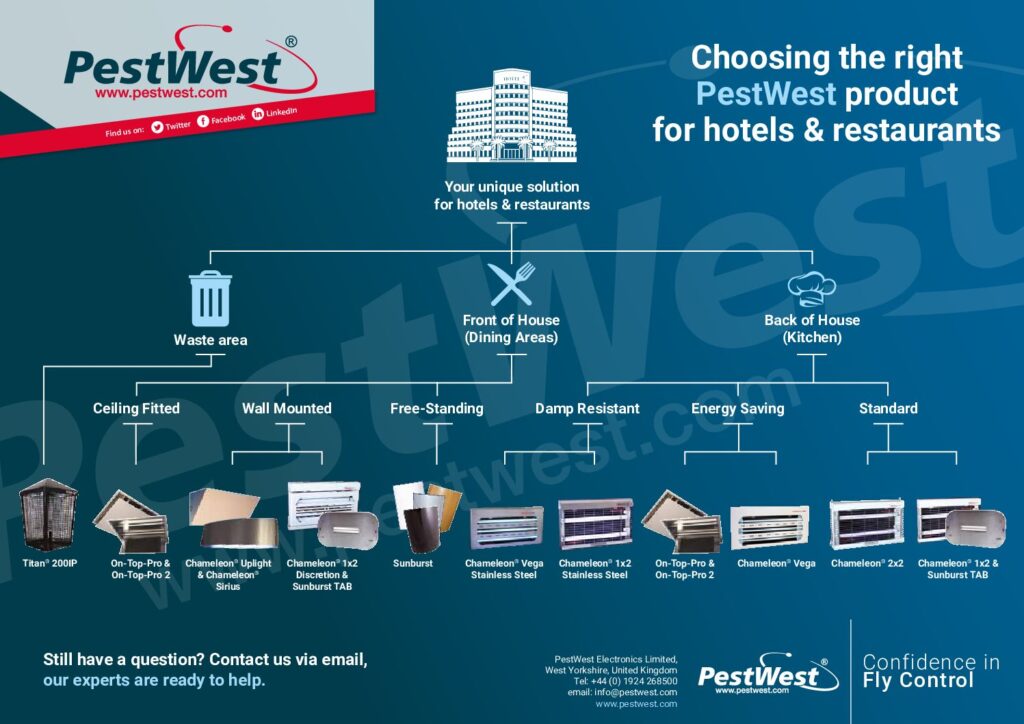Especially at this time of the year, it is important to consider whether the fly control units, for which you are responsible in your facilities, are performing to the best of their ability. Are the fluorescent lamps producing optimum levels of ultraviolet light? Are the sticky boards still capable of retaining any insect which lands upon them?
Fluorescent lamps
How can you differentiate between high- and low-quality lamps?
Reputable manufacturers like PestWest will be able to supply supportive data for their lamps. This data will outline details of spectral output levels as well as details of the output level over time. Quite often there is a great temptation to purchase less expensive lamps. However, this is always false economy in the long run as UVA light emitted from the lamps varies greatly depending on the type of phosphors used and the quality of the manufacturing process. The wrong phosphor mix and any lack of quality control leads to very low product performance. The special phosphor mix used for the PestWest Quantum® lamps and a quality control system to international standards give high initial UVA output while maintaining more UVA light over the lamp’s lifetime (see graph below). As a result, PestWest Quantum® lamps guarantee the user highly effective performance throughout their entire life span. Considering health & safety aspects, particularly when UV fly control units are used in areas with open foods, the glass coating becomes significantly important: Not all shatterproof coatings are the same because their quality depends on the material used. The FEP coating used for PestWest Quantum® shatterproof lamps features excellent impact resistance and guaranteed glass retention. It will not melt, flake, discolour nor drip and complies with international standard EN 61549 for shatterproof lamp coatings. Further, the high quality FEP shatterproof coating has an excellent UVA transmission of around 95%.
Furthermore, it is incumbent upon the contractor, in order to fulfil the contract, to change the UV producing lamp at the correct intervals to ensure maximum efficacy of the units. If the contractor is not changing the lamps at the correct intervals to insure optimum operation, again the judgement may be that the contract is not being fulfilled. These may seem slightly obscure points, however, the details of pest control contracts are being examined more and more closely. Therefore, in order to avoid any unnecessary conflict between contractor and customer: change the lamps at the correct intervals and always use good quality lamps!















